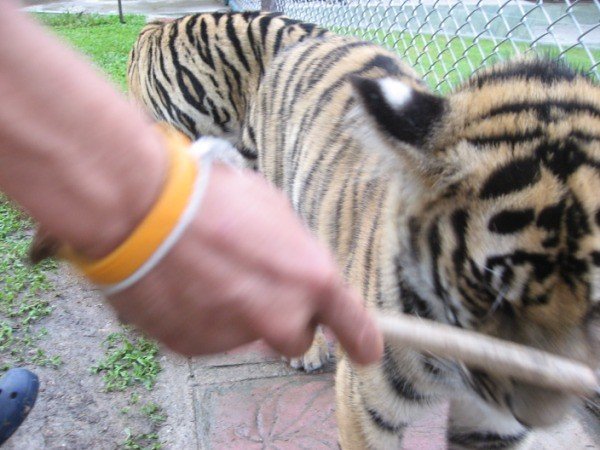Step inside a world where tail wags become melodies of joy and furry companions morph into paragons of obedience – welcome to the realm of positive reinforcement dog training. In this enchanted space, treats are not mere bribes, but powerful catalysts for behavior transformations. Yet, like all realms inhabited by humans and canines alike, there are secret codes and unspoken rules that govern this realm. For every harmonious bond formed through a well-placed pat on the head, there exists a shattered connection, mired in confusion and frustration. With the intention of unveiling these concealed guidelines, we present a comprehensive guide to the do’s and don’ts of positive reinforcement in dog training. Prepare to delve into the art of shaping behavior with finesse, and learn how to steer clear of the pitfalls that can permanently mar your four-legged companion’s training journey.
Table of Contents
- The Art of Positive Reinforcement in Dog Training
- Understanding the Power of Rewards
- Avoiding Negative Reinforcement Pitfalls
- Finding the Perfect Balance in Training Techniques
- Mastering Positive Reinforcement for Lasting Results
- Q&A
- The Conclusion

The Art of Positive Reinforcement in Dog Training
In the world of dog training, positive reinforcement is an art form that has gained popularity for its effectiveness and humane approach. It involves rewarding desired behavior rather than punishing unwanted behavior. This technique not only strengthens the bond between the dog and the owner but also helps in building trust and confidence.
To successfully implement positive reinforcement, it is important to understand the key principles. Here are some tips to master this art:
- Consistency: Consistency is the key to successful dog training. Ensure that you reward your dog every time they exhibit the desired behavior. This helps them understand what is expected of them consistently.
- Timing: Timing plays a crucial role in positive reinforcement. The reward should be given immediately after the desired behavior is exhibited so that the dog can associate the action with the reward.
- Use positive cues: Incorporate positive cues such as verbal praise, treats, or a gentle pat on the head to reinforce good behavior. This motivates the dog and encourages them to repeat the desired action.
Remember, positive reinforcement is about creating a positive and enjoyable learning experience for your furry friend. By practicing this art, you can help your dog become well-behaved and obedient without resorting to punitive measures.

Understanding the Power of Rewards
Rewards are a powerful tool that can motivate and encourage individuals to achieve their goals. Whether it’s in the workplace, at school, or within personal relationships, the power of rewards should not be underestimated. When used effectively, rewards can help boost productivity, enhance performance, and create a positive and rewarding environment.
By offering incentives and recognizing achievements, organizations and individuals can tap into the power of rewards to drive desired behaviors and outcomes. Rewards can take various forms, such as bonuses, promotions, praise, or tangible gifts. They serve as a way to reinforce positive behavior, encourage continued effort, and inspire individuals to go above and beyond.
When implementing a reward system, it is important to consider the specific needs and preferences of the individuals involved. Different people respond to different motivators, so it’s essential to tailor rewards to cater to their unique desires and aspirations. Additionally, setting clear and attainable goals, establishing fair metrics for rewards, and providing regular feedback and recognition can maximize the effectiveness of a reward system.
- Benefits of rewards:
- Boosts motivation and engagement
- Drives performance and productivity
- Fosters a positive and rewarding environment
- Types of rewards:
- Financial rewards (bonuses, promotions)
- Non-financial rewards (recognition, praise)
- Material rewards (gifts, prizes)
- Tailoring rewards:
- Consider individual preferences and aspirations
- Set clear and attainable goals
- Establish fair metrics for rewards
- Provide regular feedback and recognition

Avoiding Negative Reinforcement Pitfalls
When it comes to shaping behavior, positive reinforcement is the go-to technique. However, is equally crucial in order to maintain a healthy and effective learning environment. Here are a few key strategies to keep in mind:
- Focus on rewards, not punishment: Rather than dwelling on the negative consequences of undesired behaviors, shift your focus on rewarding and highlighting positive actions. This creates a more welcoming atmosphere and motivates individuals to strive for excellence.
- Be consistent: Consistency is the backbone of successful negative reinforcement management. Ensure that consequences for specific behaviors remain constant across all individuals. This eliminates any confusion and establishes a fair and balanced set of expectations.
- Provide constructive feedback: Instead of using criticism as a tool for punishment, focus on offering constructive feedback. Effective communication and guidance help individuals understand the desired behavioral changes without feeling demotivated or discouraged.
By following these strategies, you can steer clear of negative reinforcement pitfalls and foster a positive learning environment that encourages growth and progress.
Finding the Perfect Balance in Training Techniques
When it comes to training, there is no one-size-fits-all approach. Each individual has unique needs and preferences, making it crucial to find the perfect balance in training techniques. By combining various methods and tailoring them to suit specific goals and abilities, we can optimize results and ensure a well-rounded training experience.
The Art of Variety
Incorporating a diverse range of training techniques is key to preventing boredom and maximizing progress. By regularly switching up your routine, you can challenge different muscle groups and keep your body guessing. Experiment with a mix of weightlifting, cardio exercises, yoga, and functional training to target different aspects of fitness and avoid plateaus.
Finding the Sweet Spot
It is essential to strike a balance between pushing yourself to achieve growth and avoiding overtraining. Pushing too hard without allowing for proper rest and recovery can lead to fatigue, injuries, and setbacks. Conversely, being too lenient with your training may not yield the desired results. Listen to your body, take rest days when needed, and gradually increase intensity to find the sweet spot where progress and sustainability converge.
Personalization is Key
Remember, no two individuals are alike, and the perfect balance in training techniques may differ from person to person. It is crucial to acknowledge your own goals, limitations, and preferences when crafting a training regimen. Consulting with a professional trainer or coach can provide valuable insights and help tailor a program that aligns with your unique needs.
Mastering Positive Reinforcement for Lasting Results
Achieving lasting results is a goal shared by individuals in various areas of life, whether it’s in education, fitness, or personal growth. One effective and empowering approach to reach these goals is through mastering the art of positive reinforcement. This technique focuses on rewarding desired behaviors, encouraging individuals to continue practicing and developing them. By creating an environment that fosters positivity and motivation, lasting change becomes not only attainable but also sustainable.
To harness the power of positive reinforcement, it is essential to understand the principles behind it. Here are some key factors to consider:
- Show appreciation: Recognize and acknowledge progress, no matter how small. Celebrating even the tiniest achievements can boost confidence and inspire individuals to persevere.
- Be specific: When offering praise or feedback, be precise about what behavior or action you are highlighting. By doing so, individuals can identify the exact behavior that led to a positive outcome and replicate it in the future.
- Offer rewards: Incentivize progress by providing rewards that are meaningful and desirable. Whether it’s a small treat or a simple accolade, rewards can reinforce positive behaviors and create an added sense of accomplishment.
Through mastering positive reinforcement techniques, you can foster a supportive environment that empowers individuals to strive for excellence. By focusing on highlighting accomplishments, providing specific feedback, and offering appropriate rewards, lasting results become not only a possibility but a reality. So let’s embrace the power of positive reinforcement and take steps towards achieving long-term success.
Q&A
What is positive reinforcement in dog training?
Positive reinforcement in dog training is a method that involves rewarding desirable behaviors to encourage their repetition. It relies on the use of treats, praise, or toys to reinforce good behavior, rather than punishing bad behavior.
Why is positive reinforcement considered an effective training technique?
Positive reinforcement is highly effective because it builds a strong bond of trust between the dog and the trainer. It encourages dogs to learn voluntarily, making training more enjoyable and reducing stress, while also promoting good behavior.
What are some do’s of positive reinforcement in dog training?
Do use high-value treats or rewards that your dog finds particularly motivating. Do be consistent in timing your rewards, so your dog clearly understands which behaviors are being reinforced. Do start with simple commands and gradually increase difficulty to keep your dog engaged.
What are some don’ts of positive reinforcement in dog training?
Don’t use punishment or negative reinforcement as it contradicts the concept of positive reinforcement. Don’t over-rely on treats; gradually transition to intermittent rewards. Don’t forget to be patient and understanding – training takes time and consistency.
Can positive reinforcement work for all dogs?
Yes, positive reinforcement can be effective for all dogs, regardless of their age, breed, or size. However, it’s important to tailor your training techniques and rewards to suit your individual dog’s preferences and motivation.
How can I avoid inadvertently reinforcing bad behavior?
To avoid reinforcing bad behavior, ensure you only reward your dog when they display the specific behavior you want to reinforce. Ignore or redirect unwanted behaviors without providing any form of reinforcement, and remember to focus on rewarding the positive behaviors instead.
Is positive reinforcement the only method of dog training?
No, positive reinforcement is just one method of dog training. There are various other training techniques available, such as clicker training or leash training. However, positive reinforcement is widely regarded as an effective and humane approach to teaching dogs.
The Conclusion
As we wrap up our exploration of “The Do’s and Don’ts of Positive Reinforcement in Dog Training,” we hope this article has shed some light on the remarkable power of positive reinforcement. From wagging tails to ear-to-ear smiles, the bond between humans and dogs grows stronger when kindness and understanding take center stage.
Remember, dear readers, that the journey of training your furry companions should be infused with patience, persistence, and most importantly, love. Embrace the do’s of positive reinforcement: praise, rewards, and consistency, as they pave the path to a harmonious relationship built on trust and mutual respect.
But let us not forget the don’ts – the pitfalls that await the unwary. The overuse of treats, the neglect of their unique personality traits, and the reliance on fear or punishment. These mistakes can hinder progress and fracture the delicate threads of trust we work so hard to weave.
So, as you venture forth into the enchanting realm of positive reinforcement, remember that each dog’s story is unique, and their progress unfolds at its own pace. Celebrate the small victories, those tiny steps forward, for they lay the foundation for monumental triumphs. Take the advice of experts with a discerning mind, filtering their wisdom through the lens of your dog’s individuality.
Embrace the art of connection, for it is in these moments that you’ll unlock the true potential of your four-legged companions. Cherish the journey, with all its ups and downs, and let the symphony of trust and understanding guide your steps.
May your training sessions be filled with laughter, tail wags, and pure leaps of joy. And may the language you share with your dogs be one of unwavering love and boundless discovery.
Stay curious, stay compassionate, and most importantly, stay kind. For in the vast world of positive reinforcement, the possibilities for growth and learning are as endless as a dog’s love.
As an affiliate, my content may feature links to products I personally use and recommend. By taking action, like subscribing or making a purchase, you’ll be supporting my work and fueling my taco cravings at the same time. Win-win, right?
Want to read more? Check out our Affiliate Disclosure page.